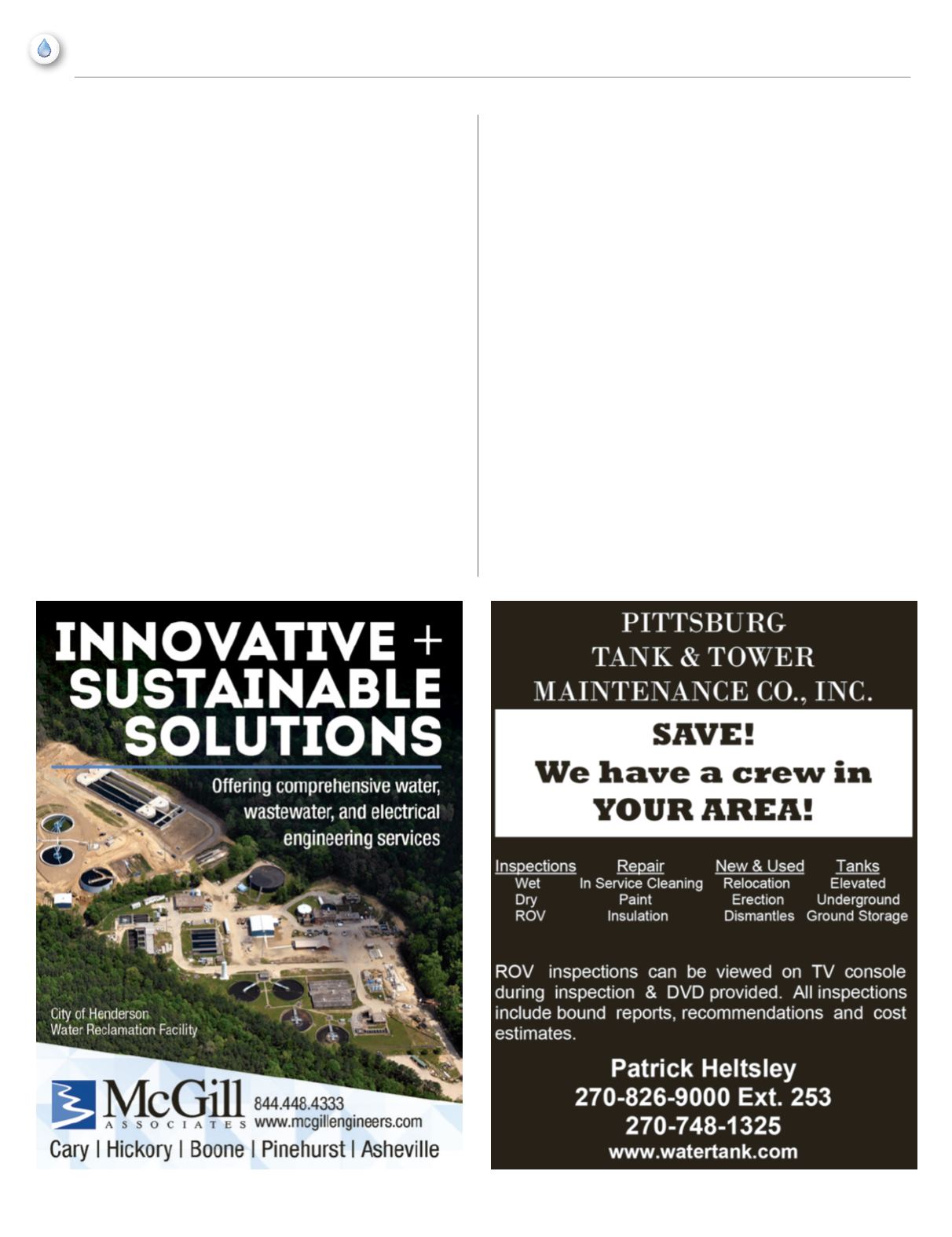

12
NCRWA.COM|
Fall 2015
feature
Water Works Association (AWWA), in accordance with its Seismic
Use Group (SUG) and site class. The SUG is a classification assigned
to a tank based on its intended use and expected performance;
Tanks that serve multiple facilities use the highest SUG. Site class
accounts for the effect of local soil conditions on the ground motion
and are based on the soil present and their engineering properties as
established by a geotechnical investigation. The SUG and site class
help determine the appropriate freeboard and the number of anchor
bolts needed. Freeboard is the distance from the Maximum Operating
Level (MOL) to the lowest level of the roof framing and is determined
by the sloshing wave height that could occur
3
. Freeboard is taken into
consideration to prevent a tank from overturning or causing roof
damage due to sloshing.
The design of the piping system connected to the tank should consider
the effects of foundation movements and potential movement of the
connection points during earthquakes. Sufficient flexibility should be
provided to avoid release of the tank contents due to failure of the
piping system. The piping system and supports shall be designed so
as not to impart significant mechanical loading on the attachments
of the tank. Mechanical devices that add flexibility, such as bellows,
expansion joints, and other flexible apparatus, may be used when
designed for the seismic displacements and defined operating pressure
4
.
WHAT TO LOOK FOR
Water tanks should be inspected regularly for proper working order
and stability before severe weather hits. Overhead obstructions, trees
and overgrowth that could puncture or damage a tank during severe
weather should be removed, and operators should routinely look for
foundation, wind, and earthquake damage. Such damage on tower-
supported tanks may be indicated by cracked coating or welds at the
tower connections; broken, bent, or sagging rods; buckled struts;
dented or twisted columns; or missing or loose rod pins. If any of these
conditions are observed, the tank should be professionally inspected.
In addition, tanks in areas at high risk for wind or earthquake damage
should be inspected more frequently than tanks in low risk areas
5
.
References
1. National Fire Protection Association, NFPA-22 Standard for Water
Tanks for Private Fire Protection. 2013
2. National Fire Protection Association, NFPA-780 Standard for the
Installation of Lightning Protection Systems. 2014.
3-4. American Water Works Association, D100-11 Welded Carbon
Steel Tanks for Water Storage. 2011.
5. American Water Works Association, M42 Steel Water Storage
Tanks. 2013.
















